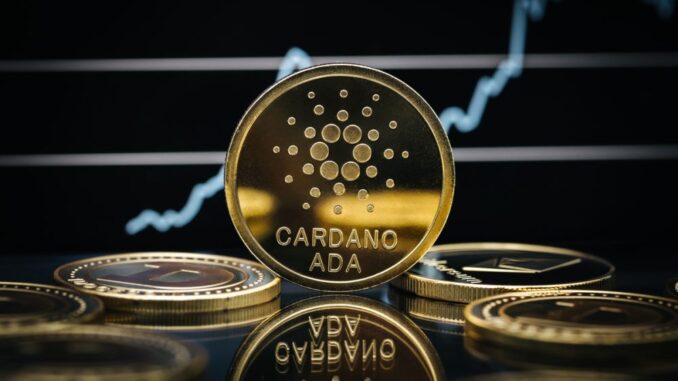
All through this collection of articles, we’re wanting on the high blockchains in crypto that will help you make sense of the alphabet soup of so-called “altcoins” that exists past that of Bitcoin’s BTC and Ethereum’s ETH.
We are going to have a look at what they’re, how they work, what they do, and their execs and cons.
You’ll come out of this collection not solely with a greater sense of what cryptocurrency is all about, however you’ll additionally perceive why the best way a token works — the best way its blockchain processes transactions — is vital to its success or failure as a digital asset.
See additionally: PYMNTS Blockchain Series: What is Solana?
So, what’s Cardano?
The Cardano blockchain is a number of issues, amongst them one of many big-three Ethereum Killers which can be in search of to steal the No. 2 blockchain’s crown as the highest sensible contract platform within the decentralized finance ecosystem.
For one more, it’s the brainchild of Charles Hoskinson, one of many authentic builders who labored on Ethereum with its creator, Vitalik Buterin. By his estimation, Cardano is Blockchain 3.0, the successor to Blockchain 1.0 — Bitcoin’s switch of worth operate — and Blockchain 2.0, Ethereum’s sensible contract performance.
For a 3rd, it’s one thing distinctive, a peer-reviewed blockchain, that means all code updates and blockchain upgrades are scrutinized in a good quantity of element earlier than being allowed to go dwell. That makes it simpler to catch safety points and different flaws earlier than they go dwell. The undertaking calls itself the world’s first provably safe blockchain.
It is usually the chief of the Ethereum Killers by market capitalization, $48.8 billion at this writing, making it the No. 5 blockchain.
That’s been helped by the announcement that an eagerly awaited DeFi undertaking, the SundaeSwap decentralized trade, or DEX, is launching on Jan. 20 — with guarantees to distribute a complete lot of its native SUNDAE tokens to early customers. Then there’s Pavio, a Decentraland-style metaverse undertaking minting 100,000 land parcels as NFTs, coming quickly.
Enjoyable reality: Cardano’s token, Ada, is known as for Ada Lovelace, a Nineteenth-century mathematician extensively thought of the primary laptop programmer. Who occurred to be Lord Byron’s daughter.
Cardano’s improvement is split into 5 elements, or “eras.” Named for poets, they start with Byron (in fact), the foundational work. Subsequent, come Shelly (decentralization), Goguen (sensible contracts), Basho (scaling) and Voltaire (governance). Much more organized than most blockchain tasks, work on Cardano started in 2015 and is at the moment in Goguen.
Two-part scalability
Extra to the purpose, like Solana and Polkadot, Cardano positions itself as a greater, sooner, extra scalable and extra environmentally pleasant platform, unburdened by Ethereum’s sluggish blocktime — 15 to 25 transactions per seconds, a snail’s tempo in comparison with Visa’s 1,700 TPS.
Cardano works by dividing the blockchain into two elements. There’s a Cardano Settlement Layer that processes and information all transfers of worth in its native token, Ada, and a Cardano Computational Layer, on which the precise sensible contracts and decentralized functions, or DApps, run individually. That may enable Cardano to deal with about 250 TPS. Which Hoskinson and the tasks builders knew wouldn’t present sufficient scalability.
So, they started engaged on a Layer 2 answer known as Hydra concurrently. It ought to enable Cardano to succeed in a theoretical a million transactions per second. Ethereum’s coming shift to Ethereum 2.0 is meant to provide it 100,000 TPS.
Usually, a Layer 2 undertaking just like the Lightning Community for Bitcoin seeks to hurry up an present blockchain doing precisely what Cardano’s Settlement and Computational layers do — separating the transactions from the capabilities. In Hydra’s case, it’s going to add an infinite variety of Computational Layers to the blockchain.
Staking inexperienced
Just like the Ethereum Killers and a lot of the latest blockchain tasks, Cardano runs on a proof-of-stake, or PoS, consensus mechanism, which makes use of virtually no energy. It’s the foremost substitute know-how for Bitcoin and Ethereum’s power-hungry proof-of-work, or PoW, mechanism.
See additionally: PYMNTS DeFi Series: What is Staking?
Each are used to safe the blockchain and add blocks of recent transaction information to it, with the validators (PoS) and miners (PoW) incomes new tokens as a reward for his or her work. PoW’s energy necessities are equal to complete international locations.
Whereas Hoskinson’s firm, IOHK, is closely concerned in Cardano’s improvement, it doesn’t management it. The choice to make software program updates, technical upgrades and fund tasks to assist Cardano is managed in DeFi method by a vote of token holders.
On this case, Ada tokens should not solely a foreign money used for funds but in addition a governance token giving a vote on the blockchain’s future. That doesn’t change the truth that all proposed adjustments are peer reviewed earlier than going dwell.
——————————
NEW PYMNTS DATA: AUTHENTICATING IDENTITIES IN THE DIGITAL ECONOMY – DECEMBER 2021
About:More than half of U.S. consumers think biometric authentication methods are faster, more convenient and more trustworthy than passwords or PINs — so why are less than 10% using them? PYMNTS, in collaboration with Mitek, surveyed more than 2,200 consumers to better define this perception versus use gap and identify ways businesses can boost usage.





 Bitcoin
Bitcoin  Ethereum
Ethereum  Tether
Tether  Solana
Solana  USDC
USDC  Lido Staked Ether
Lido Staked Ether  XRP
XRP  Dogecoin
Dogecoin  Toncoin
Toncoin
Be the first to comment